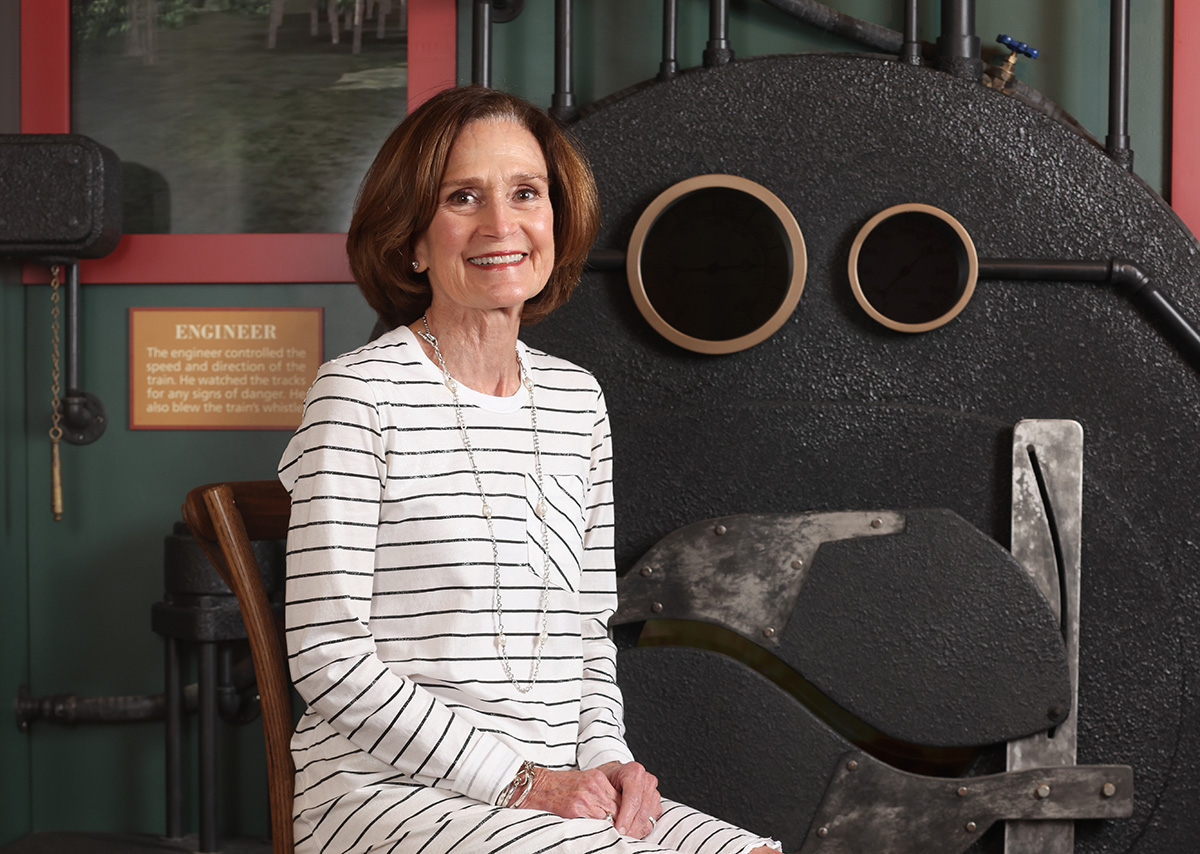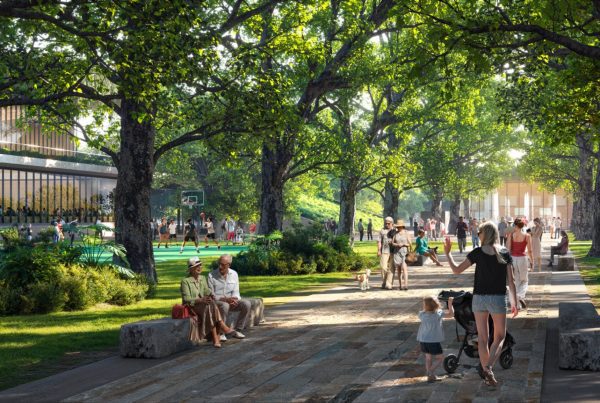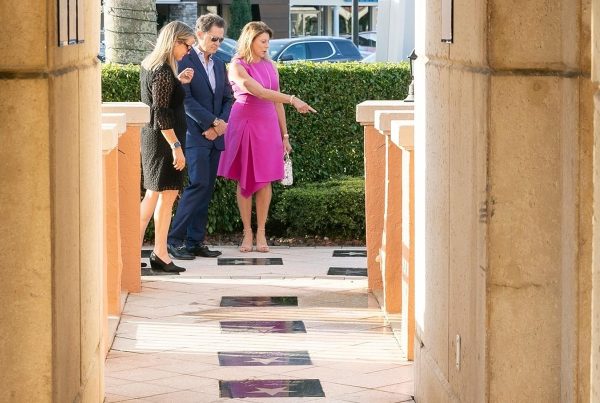Born and raised in Monticello—a part of Florida that has you officially in “the South”—Mary Csar’s high school and church were built before the Civil War. So when she arrived in Boca Raton in 1978, the ‘20s architecture was like drinking from the Fountain of Youth. Still, she was eager to embrace her new home. “I knew that the minute I got here, I told myself, I’m gonna make this my hometown,” she says. “I really felt that way.”
After raising her family, joining a litany of organizations and leading the Boca Raton Historical Society, Csar is retiring as director after 27 years. “I wanted to get through the centennial,” she says. “This is an important year. It was also a capstone of a career.”
It all started when Anne Merrill, the former executive director of the society, invited Csar to a membership tea at the home of Jamie Snyder, who would found the city’s Community Redevelopment Agency. Csar joined the society and never looked back. She also joined the Junior League of Boca Raton (eventually serving as president), served on the Downtown Advisory Committee, and worked at the CRA. This was all during a period of change in Boca Raton—there was a development for a place called Mizner Park, and residents were vehemently split on the plans. “I was taking the notes at the meeting when they decided to call it Mizner Park,” she remembers. “It was an interesting time.”
For four years, Csar worked at the National Cartoon Museum. Then, she was hired part-time by the historical society as it prepared to celebrate its 25th anniversary. When the director left in 1999, Csar was selected to take over. At the time, she was the only full-time staff member; she worked alongside a part-time office manager and facilities manager and a volunteer archivist. The society is still a small and mighty team, but now with five full-time employees.
There have been ups and downs, from recessions to celebrations. Csar led the society through the sale of the old train depot for $2.1 million; those earnings went toward a major renovation project. However, it was a bigger feat than planned, when they discovered disintegrated plumbing, foundation and electrical work. Thankfully, the City of Boca Raton provided a $650,000 grant and later a $590,000 reimbursement for repairs. “[The project] was a lot bigger than we thought, and I had to go back to the city twice. That was hard. And I understand the city’s position. I really, really did, but on the other hand, we really needed this to work.”
Then came the $1 million donation from the Schmidt Family Foundation—the largest in the society’s history. The funds created the Schmidt Boca Raton History Museum, and the donation also allowed for new display areas, exhibits, and utilizing the historic council chamber as a gathering space and a research library. The new digs were ready in time for an important milestone: the 100th anniversary of Boca Raton’s incorporation. For the last two years, the society has worked with the city to prepare while also fielding countless queries from local and regional media. Even with a small team, they were able to nimbly satisfy photo and information requests; Csar credits her colleague, curator Sue Gillis, for spending a decade archiving and organizing the museum’s photographs and artifacts.
With her tenure ending in December, Csar has no plans to leave Boca Raton, and you’re sure to see her around—in a volunteer capacity, like she did at the beginning. After all, next year is America’s 250th birthday. “I’ve got to be here to come to all the programs,” she says.
HER FIRST GIG: I started helping with the tours of [The Boca Raton], because that was their first program. A lot of the ladies from the historical society that I remember so vividly are the ones who worked on the restoration of town hall, and they worked on the [train] depot, and they were just very dynamic and “let’s get it done” type people.
PRESERVING HISTORY: I hand it really to our early founders, who immediately started collecting artifacts. Everything in the Pioneer Room is from Boca Raton. We were actively collecting artifacts, and from the very beginning, we were actively a very academic institution. FAU was here. Dr. Donald Curl was one of our early members. He was a history professor, so he wrote wonderful “Spanish River Papers” [newsletters for members focusing on historical themes and eras — Ed.] that were sent out. Yeah, the members and he really got us on the right track. … We were lucky to have early archivists who were good, even though they were volunteers.
STORIES FROM THE PAST: My grandmother from Alabama lived in the same town, and she told stories about her life in Alabama all the time. Southerners love to tell stories, and so I grew up with those stories. Heritage and that kind of thing were always just part of me.
This story is from the November/December 2025 issue of Boca magazine. For more like this, click here to subscribe to the magazine.







